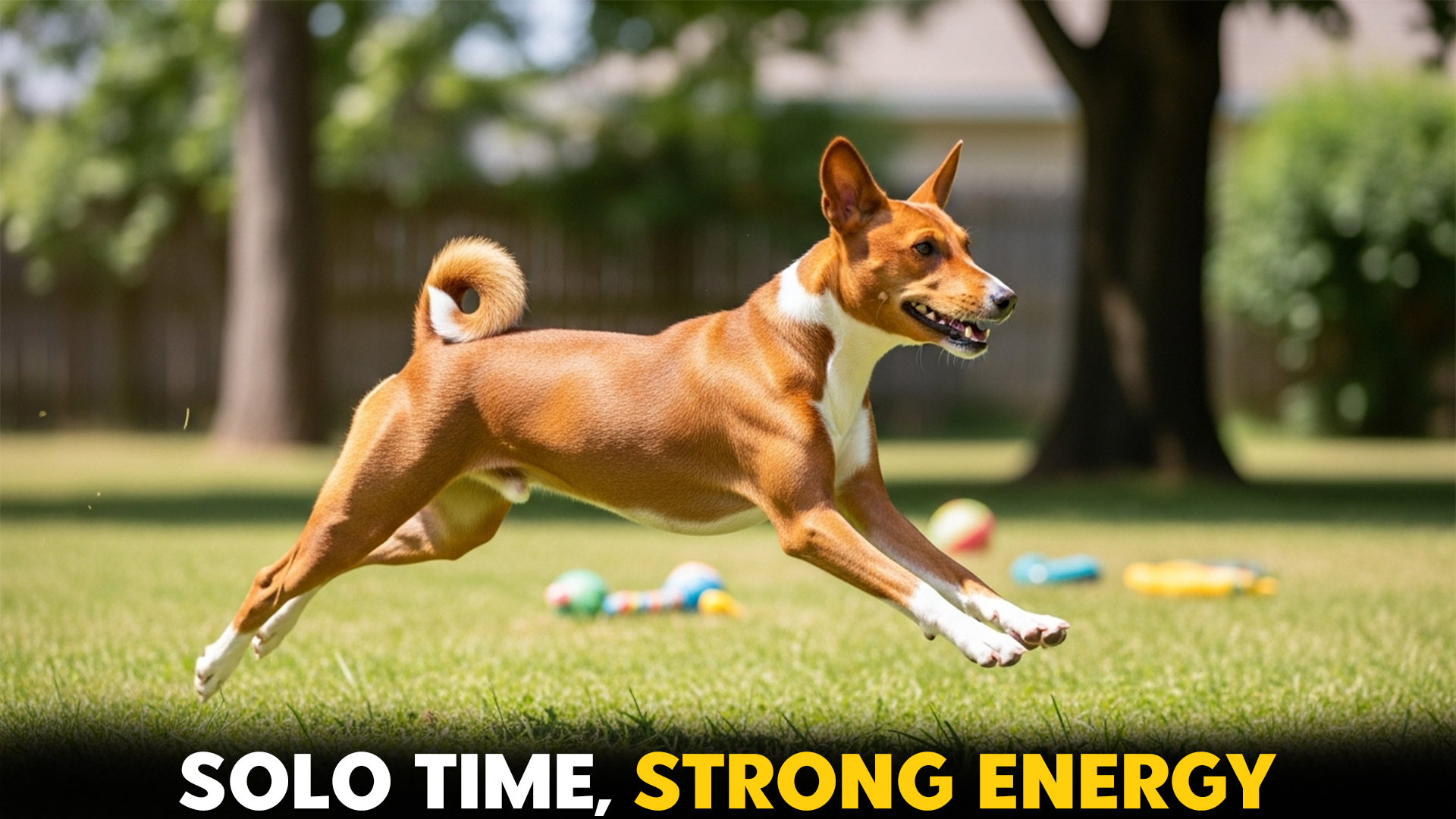Can a dog be bursting with energy yet perfectly happy on its own? It might sound unlikely, but some breeds manage this balance effortlessly.
These lively companions can sprint across a park one moment and snooze peacefully the next, even when you’re not around. They love a good game of fetch or a long hike, but they also know how to unwind without constant attention.
For busy owners who crave a spirited dog but can’t be home all day, finding this mix of independence and vitality is a real win. Whether you live in the city or the countryside, the right breed can adapt to both active adventures and quiet afternoons alone.
In this guide, we’ll uncover energetic dog breeds that thrive on excitement and enjoy their solo time — the perfect partners for people who want energy without the clinginess.
Energetic Dog Breeds Who Enjoy Solo Time
1. Greyhound
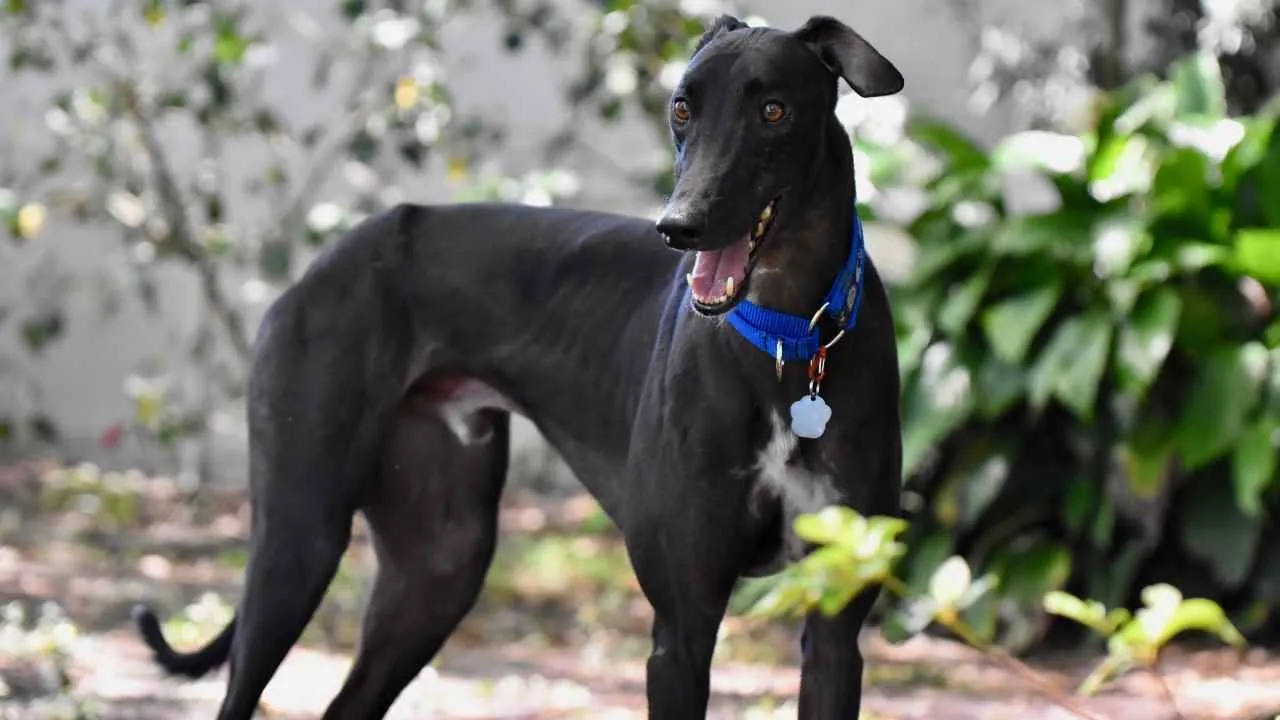
Known for their sleek bodies and lightning-fast speed, Greyhounds are often seen as the athletes of the canine world. They were originally bred for hunting and racing, yet their calm nature makes them gentle companions at home.
Despite their burst of energy outdoors, Greyhounds are surprisingly low-maintenance indoors, often lounging peacefully after a quick sprint.
According to the AKC, Greyhounds are affectionate and loyal but also quite independent. They don’t demand constant attention, making them well-suited for owners with busy lifestyles. Their short coat and graceful frame require minimal grooming, and they adapt easily to quiet living environments.
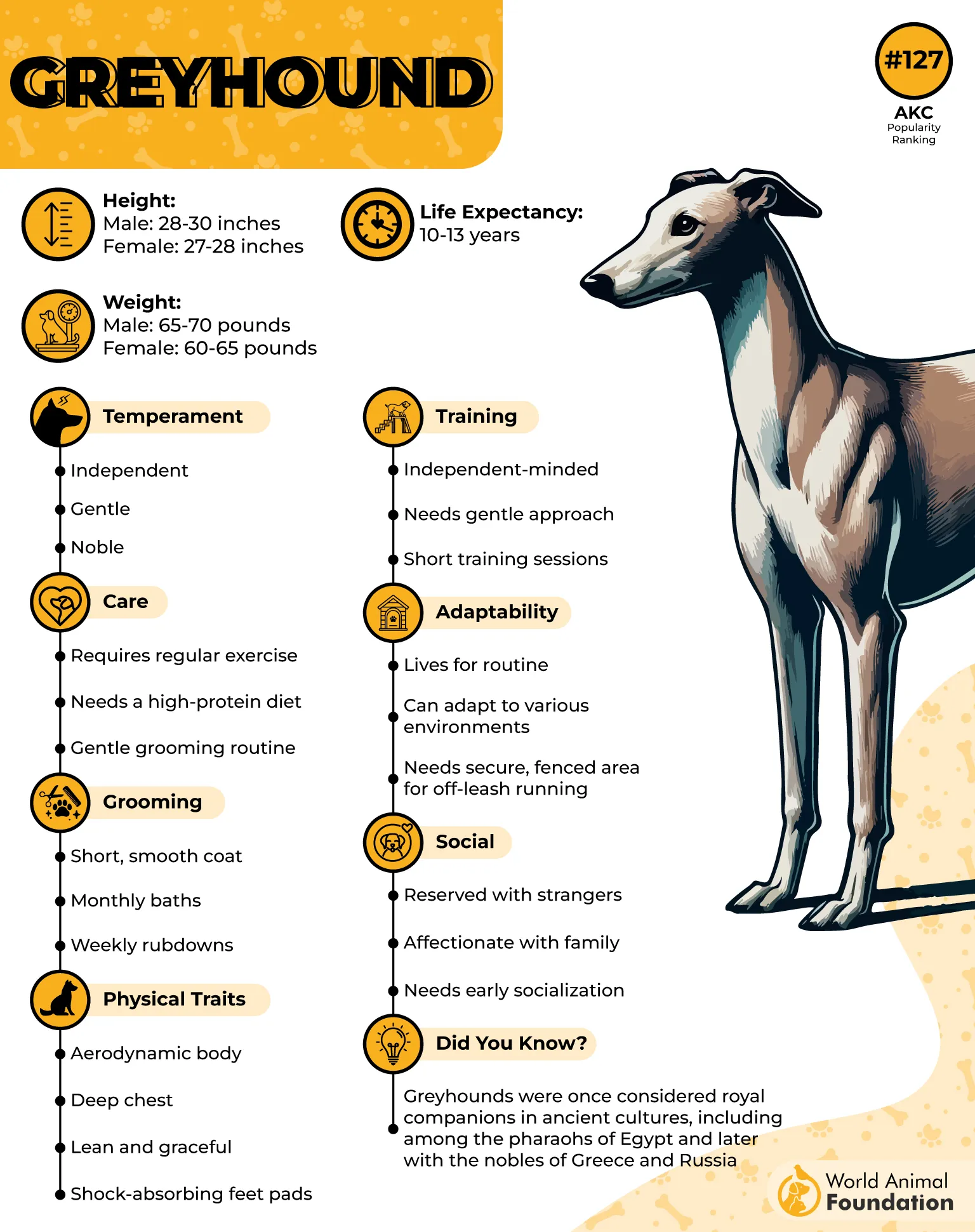
One of the most appealing traits of Greyhounds is their “couch potato” personality. After a short run, they’re content to spend hours relaxing in soft spots. This balance between athleticism and serenity makes them perfect for those seeking an energetic yet relaxed dog.
Socially, Greyhounds are polite with strangers and typically gentle with other pets. Early socialization helps them adjust to various situations and new people. While affectionate, they appreciate their alone time and don’t struggle with brief solitude.
Health-wise, Greyhounds are a hardy breed with few major concerns when properly cared for. Regular exercise, a balanced diet, and comfortable bedding help keep them thriving both physically and mentally.
Fun Fact
A Greyhound can reach speeds up to 45 miles per hour, making it one of the fastest dog breeds in the world — faster than a racehorse over short distances!
🎧 Dogcast
Episode 9 — Humans, Stop Dressing Us Like This!
If you don’t hear sound, tap the button above to enable audio.
2. Basenji
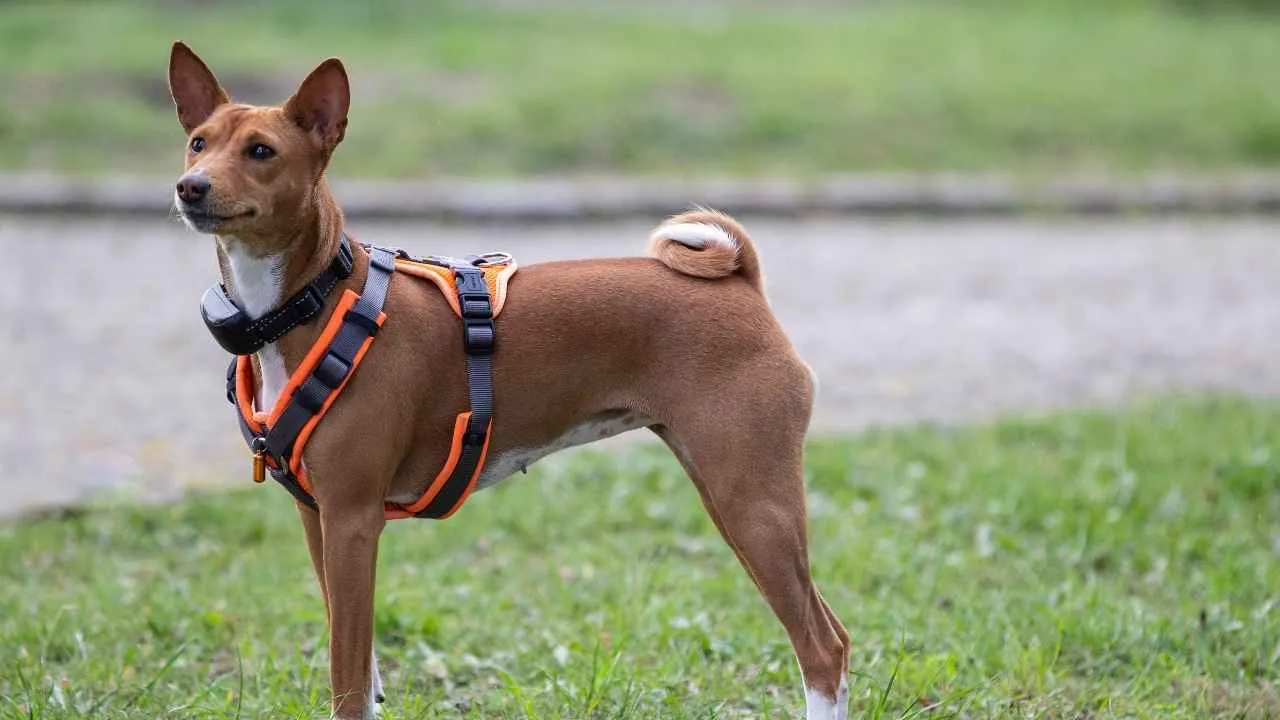
Often referred to as the “barkless dog,” the Basenji is known for its intelligence and independence. Originating in Africa, this breed was developed to hunt and think on its own — traits that still shine through in modern Basenjis. They’re lively, curious, and prefer to explore rather than constantly follow their owners.
Orvis states that Basenjis form strong bonds with their families but are comfortable spending short periods alone. Their calm and clean habits make them well-suited for apartment life. However, they need mental stimulation and regular activity to stay happy and avoid mischief.
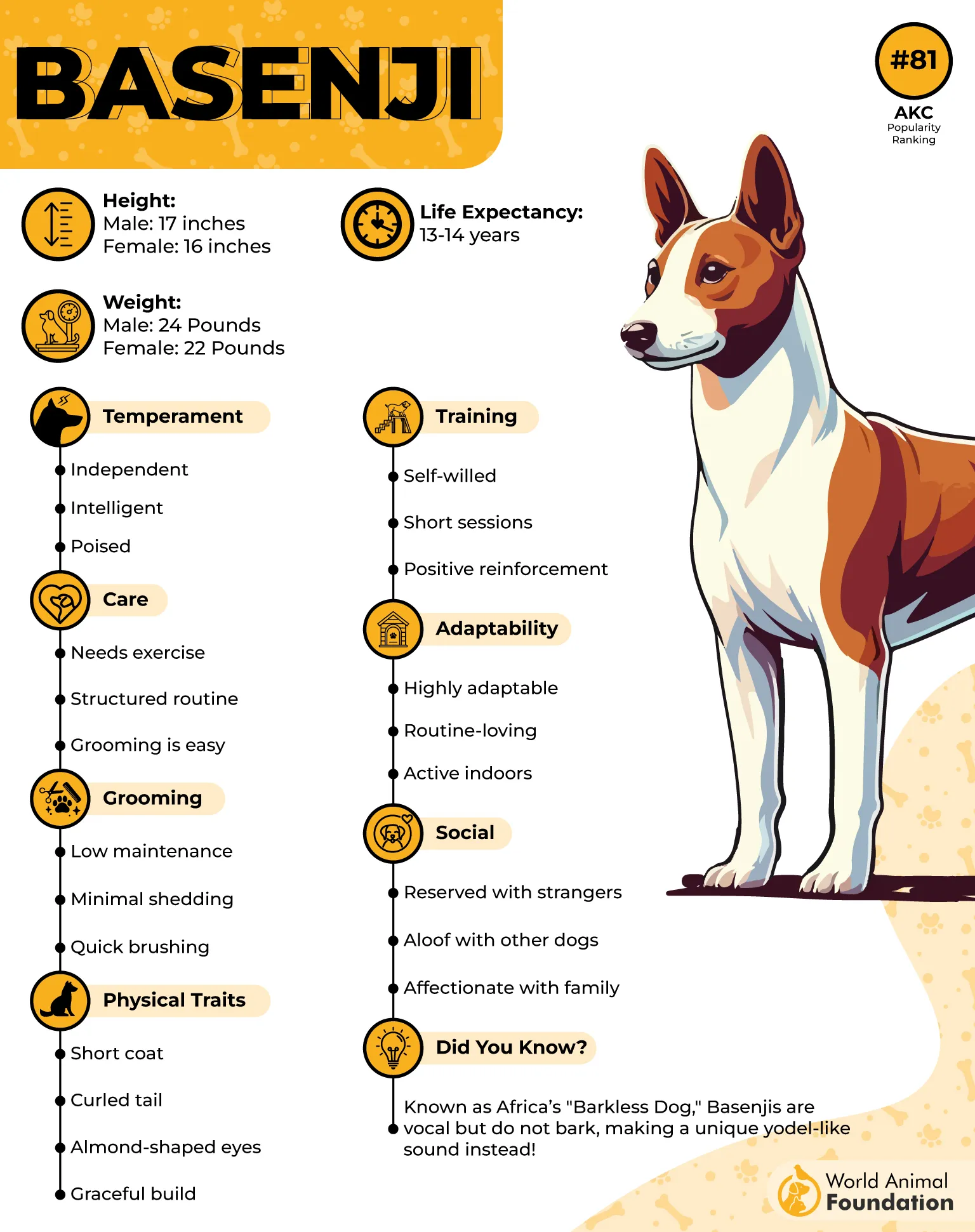
The Basenji doesn’t have a traditional “doggy odor,” and it grooms itself much like a cat. This tidy nature adds to its charm for people who appreciate a neat, low-shedding pet. They thrive in consistent routines and appreciate owners who respect their space.
Basenjis are intelligent problem-solvers who enjoy learning new things. Training requires patience and creativity, as they can quickly grow bored with repetition. Positive reinforcement and variety are key to keeping their attention.
While small, Basenjis are athletic and agile, excelling at games that challenge both their bodies and minds. Their alertness makes them excellent watchdogs, even without barking.
Fun Fact
Basenjis don’t bark, but they can “yodel” — a unique sound called a barroo that reflects their expressive nature.
3. Alaskan Malamute
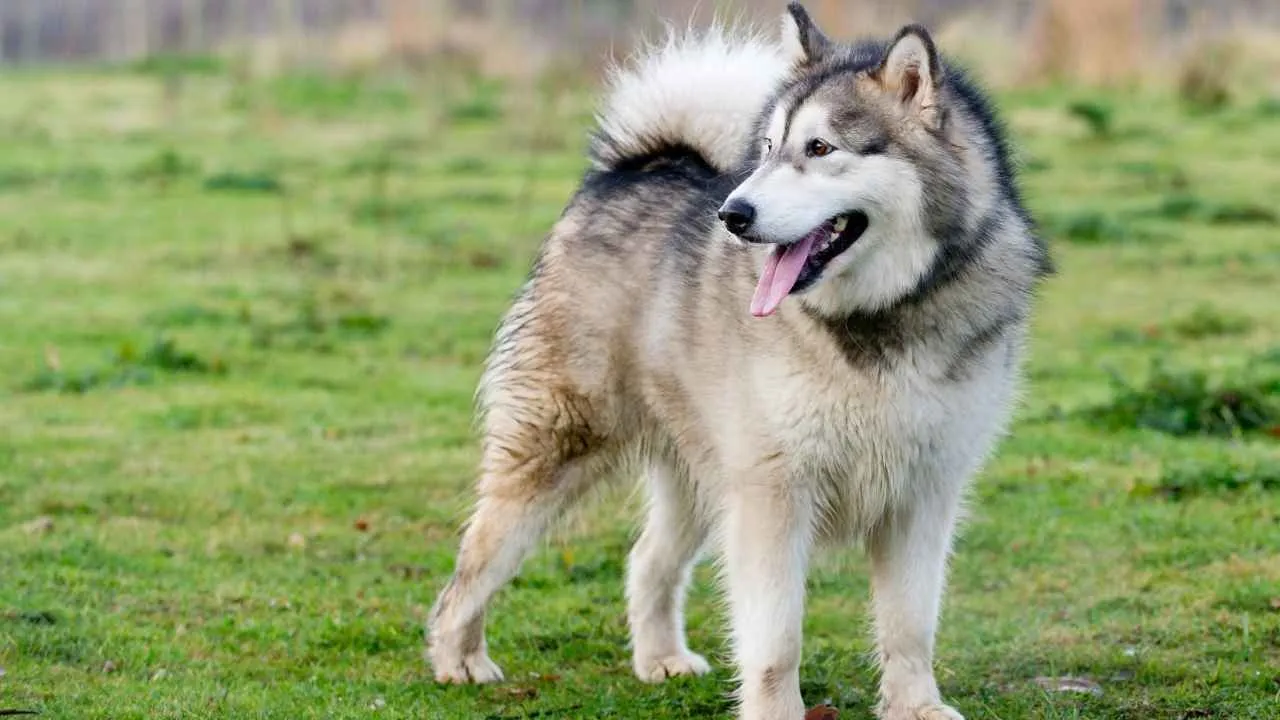
The Alaskan Malamute is a powerhouse of strength and stamina, bred to haul heavy sleds across icy terrain.
With its thick coat and striking appearance, this breed thrives in cooler climates and enjoys outdoor adventures. Despite their size and energy, Malamutes can be independent thinkers who don’t rely on constant companionship.
Their friendly temperament makes them loyal family dogs, but they also appreciate alone time when properly exercised. A Malamute left idle for too long can become restless, so daily activity is essential to maintain balance. They are social with people but less interested in constant affection.
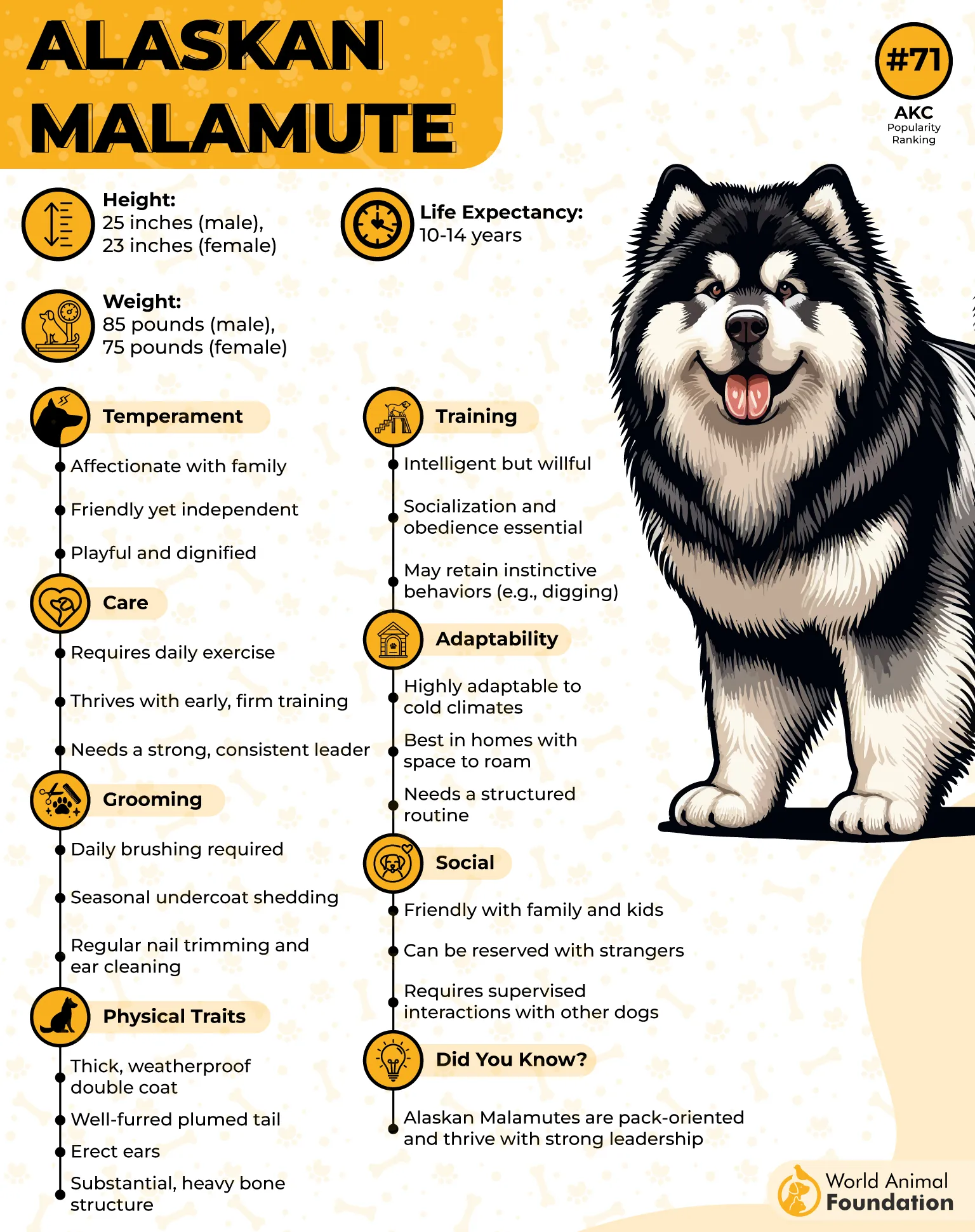
As per PDSA, Malamutes are known for their intelligence and determination, sometimes interpreting commands in their own way. Consistent, firm, yet gentle training helps them become well-mannered companions. Their confidence and independence make them ideal for experienced dog owners.
Grooming can be a commitment due to their double coat, especially during shedding seasons. Regular brushing keeps their fur manageable and their skin healthy. With proper care, Malamutes remain majestic and strong well into adulthood.
Their tolerance for solitude stems from their working-dog roots — accustomed to long hours of travel and patience. With exercise and enrichment, they can handle short periods alone comfortably.
🐾 Dog Exercise Clock
Select a breed to see its exercise need
Fun Fact
The Alaskan Malamute is one of the oldest Arctic sled dog breeds, tracing its lineage back over 4,000 years to Inuit tribes in Alaska.
4. Akita
The Akita is a symbol of loyalty and courage, originally bred in Japan for guarding royalty and hunting large game. This breed exudes quiet confidence and independence, often preferring to observe rather than seek constant attention. They are affectionate with family but naturally reserved with strangers.
Akitas possess strong protective instincts, making them excellent watchdogs. Their independence means they can tolerate alone time, especially when well-trained from a young age. However, they thrive on structure and respect mutual boundaries with their owners.
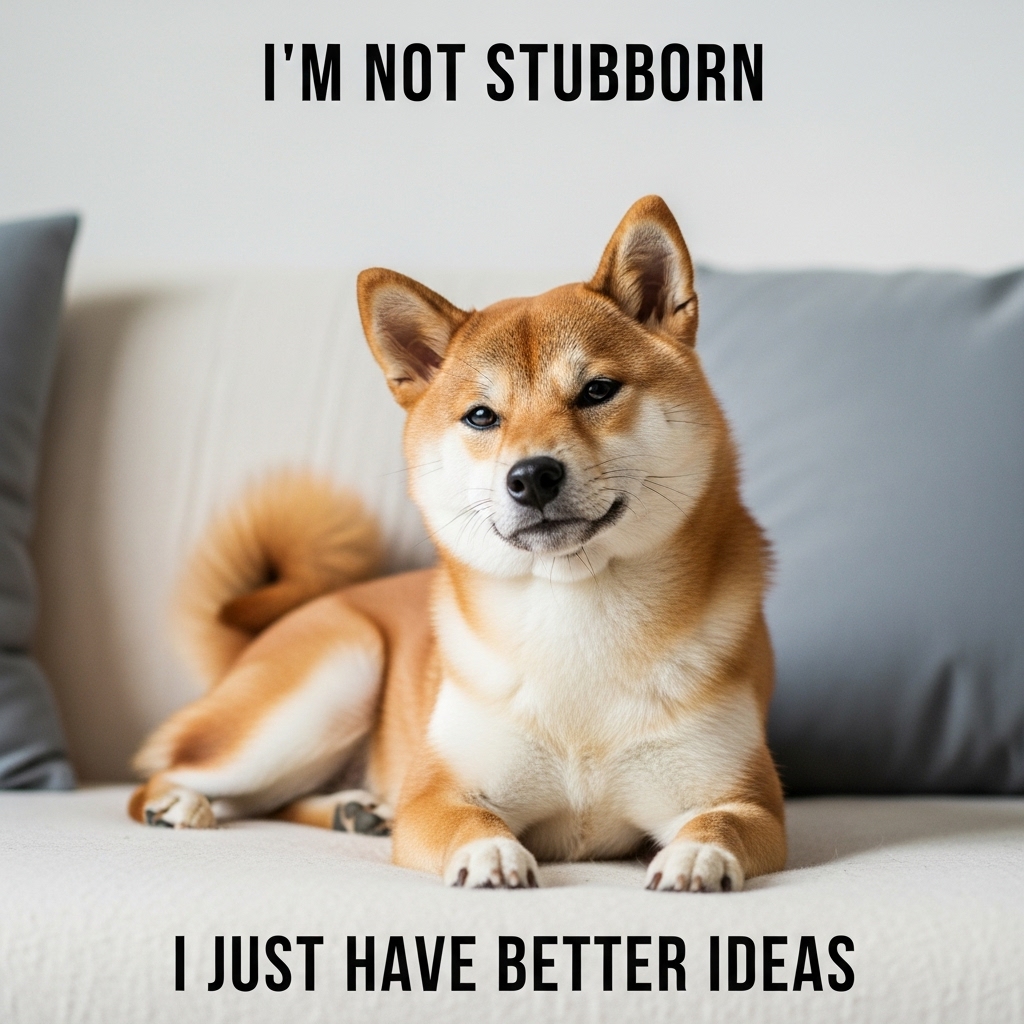
Their thick double coat not only gives them a regal look but also protects them from harsh weather. Regular brushing keeps shedding manageable and promotes healthy skin. Akitas appreciate cleanliness and often groom themselves meticulously.
These dogs are intelligent and focused, excelling in obedience and protection tasks. While not overly playful, they enjoy purposeful activities like hiking or training exercises that stimulate their mind and body.
An Akita’s temperament is calm and steady, reflecting a strong sense of dignity. When socialized early, they coexist peacefully with family members and can adapt to a variety of environments.
Fun Fact
In Japan, Akitas are seen as symbols of good health and happiness — small Akita statues are often given to celebrate new births.
5. Afghan Hound
The Afghan Hound is a picture of elegance and independence. With its long, flowing coat and proud stance, this breed has a royal appearance that reflects its ancient lineage. Originally bred in Afghanistan to hunt across rugged mountains, it combines beauty with agility and power.
Despite their aristocratic looks, Afghan Hounds are strong-willed and self-assured. They think independently and can be selective about following commands, making training a test of patience and creativity. Positive reinforcement and consistency are essential to win their respect.
This independent dog breed enjoys bursts of activity followed by quiet solitude. They love running freely and showing off their athleticism, but are content to rest alone afterward. Their calm demeanor at home contrasts sharply with their spirited energy outdoors.
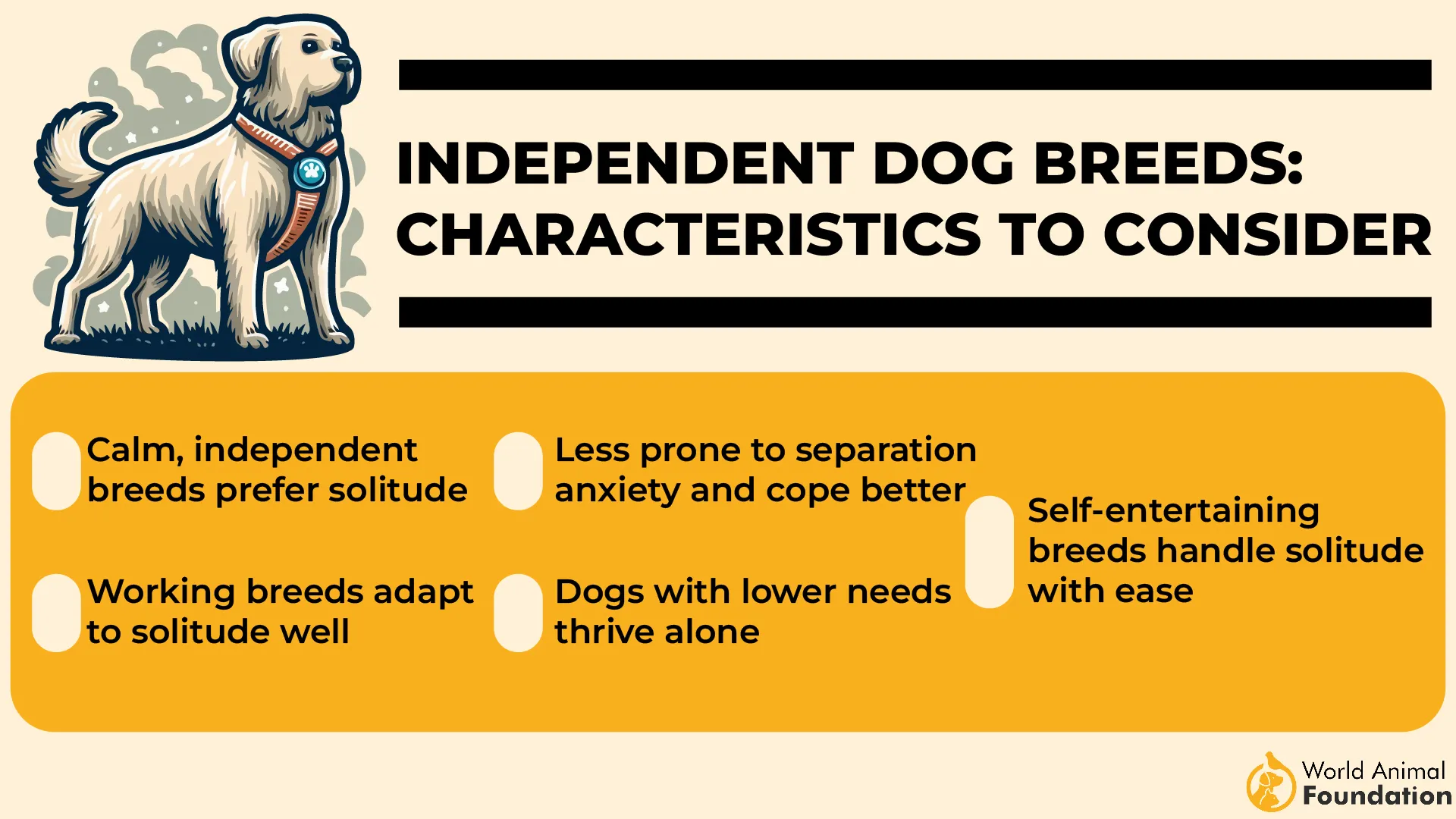
Grooming is one of the biggest responsibilities of owning an Afghan Hound. Their silky, long hair requires regular brushing to prevent tangles and maintain its signature sheen. Owners often find that the grooming routine becomes a bonding ritual rather than a chore.
Health-wise, Afghan Hounds are generally hardy but sensitive. They are known to have lean frames, deep chests, and higher sensitivity to anesthesia, requiring attentive veterinary care. Their lifespan averages around 12 to 14 years with proper maintenance.
Fun Fact
Afghan Hounds are one of the oldest dog breeds in existence, dating back thousands of years — often regarded as the “royalty” of the canine world.
6. Siberian Husky
The Siberian Husky is a bundle of energy wrapped in a thick, weatherproof coat. Bred for endurance in the Arctic, Huskies are built to pull sleds over vast snowy landscapes. Their alert expression and striking eyes reflect their intelligence and zest for life.
Huskies are social but also have a notably independent personality. While they enjoy family companionship, they’re perfectly capable of entertaining themselves for a couple of hours when given space and toys, as long as they do not get bored. Their confidence and curiosity make them natural explorers.
Training a Husky can be a lively challenge. These dogs are intelligent and quick learners, but they like to make their own decisions. Short, engaging sessions with plenty of variety keep their minds stimulated and prevent stubborn behavior.
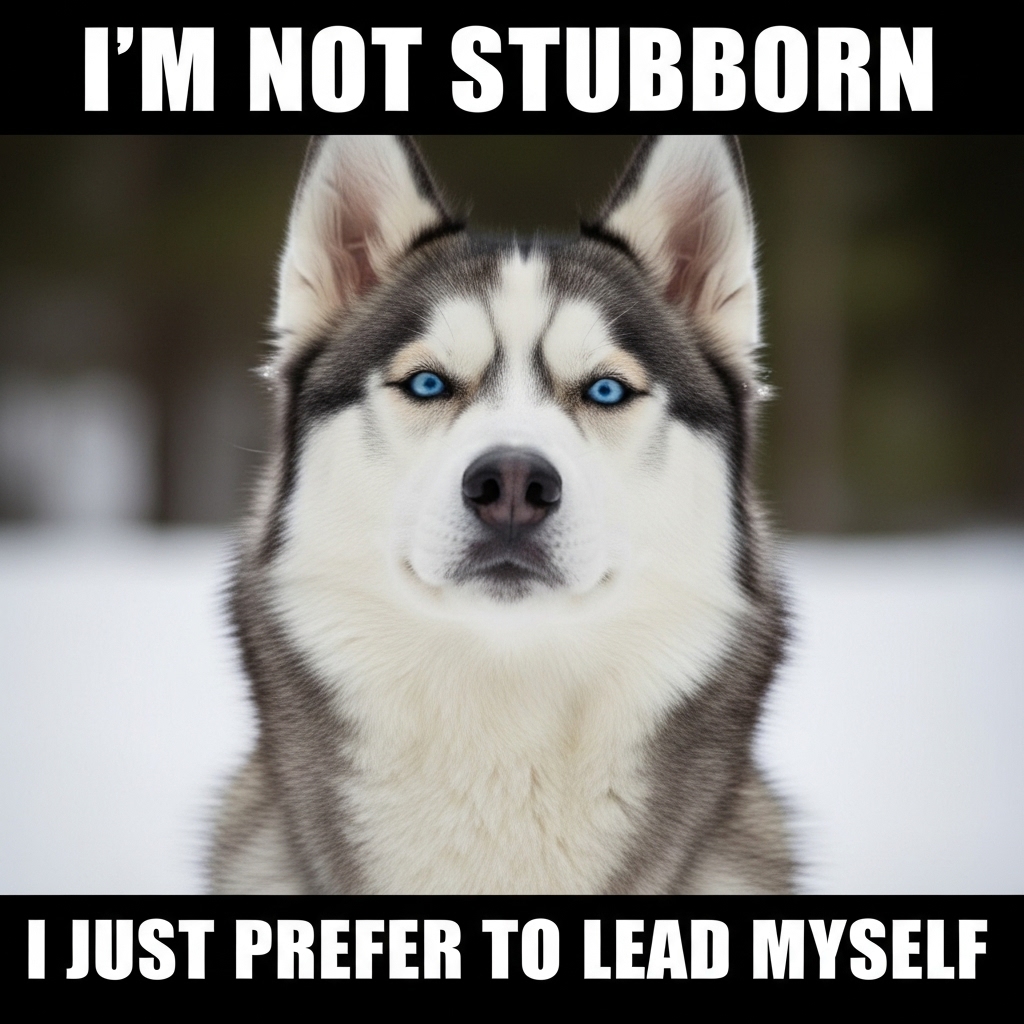
Regular exercise is crucial for this breed. Without daily activity, they can become restless and mischievous. Long walks, runs, or even hiking sessions help satisfy their physical drive and prevent boredom.
Despite their high energy, Huskies are surprisingly low-maintenance in grooming. Their coat naturally repels dirt, and they have minimal odor. However, they shed heavily twice a year, so seasonal brushing is a must.
Fun Fact
Siberian Huskies can change the tone of their howls to “talk” to humans — many owners swear their Huskies hold full conversations with them!
7. Great Dane
The Great Dane is a gentle giant with a heart as large as its frame. Known for its commanding presence and affectionate nature, this breed is both dignified and devoted. Despite their massive size, Great Danes are friendly, patient, and calm.
While they crave companionship, Great Danes handle short to moderate alone time quite well if properly trained for it.
They tend to spend their downtime lounging or napping, conserving energy between short walks or play sessions. Their quiet temperament makes them surprisingly good apartment dogs when properly exercised.
Training a Great Dane early is essential due to their size and strength. They are eager to please but respond best to gentle guidance. Consistent routines and socialization help develop their confidence and manners.
Grooming is simple compared to many breeds. Their short coat needs only light brushing, though attention to nail care and dental hygiene is important. Regular vet visits help monitor their growth and joint health, particularly in early years.
Unfortunately, Great Danes have shorter lifespans than most breeds, often averaging seven to ten years. They’re prone to bloat and certain heart conditions, but good nutrition and exercise moderation can extend their vitality.
Fun Fact
Despite their towering size, Great Danes often believe they’re lap dogs — many try to sit right on their owners for cuddles!
FAQs
1. How can energetic dogs be trained to enjoy time alone without getting bored or destructive?
Early and consistent socialization paired with enough exercise helps dogs stay calm when left alone. Give them toys or puzzles to keep their minds busy, and ensure they have their own space to rest peacefully. Over time, they learn to be self-sufficient and well-behaved when on their own devices.
2. Do energetic dogs who enjoy solo time still need regular physical and mental exercise?
Yes, even independent dogs need consistent exercise and mental stimulation to stay balanced. Without it, they may develop separation anxiety or unwanted habits. Daily walks and playtime help maintain both physical and mental peace.
3. Can energetic dog breeds that enjoy solo time still bond deeply with their owners?
Absolutely. A loyal companion doesn’t require constant interaction to form strong bonds. Independent dogs often value quality time over quantity and thrive when early training establishes trust and structure.
Conclusion
Finding the best dog breed means understanding its energy level, independence, and adaptability. Adult dogs with an independent nature can stay home alone for a few hours when given enough exercise and space to relax.
Consistent socialization, early training, and mental enrichment make them calm and well-behaved even during long stretches of absence. Independent dogs are suitable for owners who value peace and balance in their furry friends without requiring constant attention.
Other dog breeds, such as Boston Terriers, Basset Hounds, Miniature Schnauzers, Chow Chows, Shiba Inus, Lhasa Apsos, Great Pyrenees, and Shar Peis, also display self-sufficient and adaptable personalities, making them excellent choices for homes seeking loyal, low-maintenance, and content companions.


